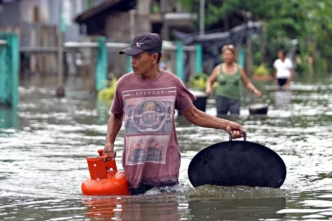Typhoon Fung-wong swept across the Philippines, causing at least two deaths and displacing over a million people, just days after Typhoon Kalmaegi killed more than 224 across the central islands.
The new storm, which hit the eastern seaboard as a “super typhoon,” left entire villages submerged and scores of towns without electricity.
The damage is widespread, stretching over 1,000 kilometres from Catanduanes Island to the far north of Luzon.
In Cagayan province, rivers like the Chico and Cagayan burst their banks, causing flash floods that trapped residents on rooftops and fully submerged the city of Tuguegarao.

Landslides and impassable main roads were reported in Aurora province, where rescue efforts were hampered by heavy rain and high water volume.
The body of a 64-year-old woman attempting to evacuate was the first confirmed death.
In response to the back-to-back disasters, President Ferdinand Marcos announced that the “state of national calamity” linked to Kalmaegi would be extended for a full year.
Furthermore, scientists warn that human-driven climate change is contributing to the increasing power and intensity of these storms.
Fung-wong is now exiting the archipelago and intensifying as it moves toward Taiwan, where it is expected to bring over 350 millimetres of torrential rain, threatening areas recently hit by devastating flooding.


 Trending
Trending 



